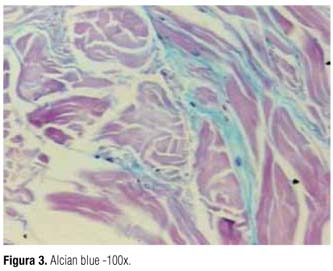Scleredema of Buschke (SB) is a rare disorder of connective tissue, characterized by hardening of the skin. Of unknown etiology, it may be associated with viral or bacterial infections, hematological alterations and diabetes mellitus (DM). In half of the reported cases of SB, there is association with DM. The most common characteristics among these patients are: being male adults, having long-term DM, bad metabolic control and presence of specific complications of DM. The histopathological examination shows dermal thickening, with widened collagen fibers separated by non-colored spots, which correspond to mucopolysaccharides deposits. The clinical consequences are: decrease in motility of the shoulders and an impairment of respiratory function. Several treatments are suggested in the literature, but with inconstant results. A case of SB is reported in a type 2 diabetes patient.




